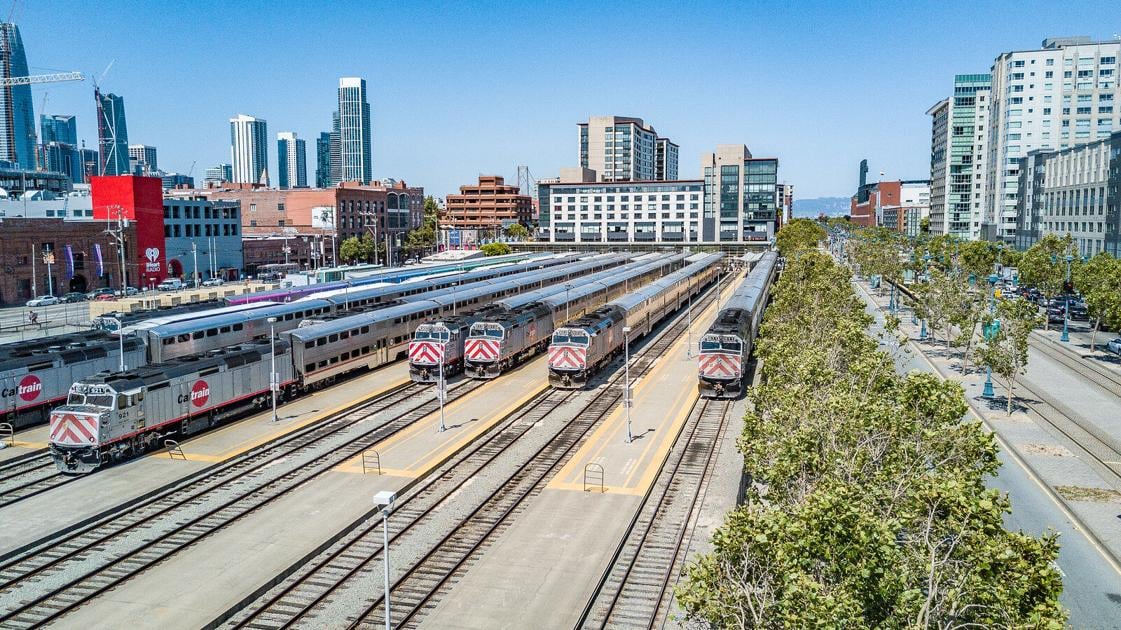San Francisco police permitted to deploy ‘killer robots’
:quality(70)/cloudfront-us-east-1.images.arcpublishing.com/archetype/3TA7KBUNKFAM7HBBF5O2HE6NAI.jpg)
SAN FRANCISCO (AP) — The unabashedly liberal city of San Francisco became the unlikely supporter of armed police robots last week after bosses approved limited use of the remote-controlled devices.
San Francisco’s board of directors voted 8-3 on Tuesday to allow police to use explosive-armed robots in extreme situations where lives are at stake and no other alternative is available. The approval comes as police departments across the US are increasingly scrutinized for the use of militarized equipment and violence in the face of years of reckoning with the criminal justice system.
The vote was prompted by a new California law that requires police to inventory military equipment such as flashbang grenades, assault rifles and armored vehicles and obtain public approval for their use.
To date, police in only two California cities — San Francisco and Oakland — have publicly discussed the use of robots as part of this process. Across the country, police have used robots for the past decade to communicate with barricaded suspects, enter potentially dangerous spaces and, on rare occasions, use deadly force.
Dallas police became the first to kill a suspect with a robot in 2016 when they detonated explosives during a standoff with a sniper who killed five officers and injured nine others.
The recent vote in San Francisco renewed a fierce debate sparked years ago about the ethics of using robots to kill a suspect and the doors such a policy could open. Experts say that despite advancing technology, the use of such robots remains largely rare.
Michael White, a professor in Arizona State University’s School of Criminology and Criminal Justice, said even if robotics companies present deadlier options at trade shows, that doesn’t mean police will buy them. White said companies were making specialized claymores to shut down barricades and were trying to put facial recognition software on body-worn cameras, but departments didn’t want them.
“Because the communities have not supported that level of surveillance. It’s hard to say what will happen in the future, but I think armed robots might be the next thing that departments don’t want because the communities say they don’t want them,” White said.
Robots or not, San Francisco official David Chiu, who authored California’s bill while he was in the state legislature, said communities deserve more transparency from law enforcement and a say in the use of militarized equipment.
San Francisco “happened to be the city that dealt with an issue that I certainly hadn’t considered when the law went through the process, and that dealt with the issue of so-called killer robots,” said Chiu, now a prosecutor.
In 2013, police kept their distance and used a robot to lift a tarp and find him hidden underneath as part of a manhunt into the alleged Boston Marathon bombing. Three years later, Dallas police officers dispatched an explosive-laden bomb disposal robot into an alcove of El Centro College to break an hour-long standoff with sniper Micah Xavier Johnson, who had opened fire on officers in protest at police brutality.
Police detonated the explosives, becoming the first department to use a robot to kill a suspect. A grand jury dismissed the charges against the officers, and then-Dallas Police Chief David O. Brown was widely praised for his handling of the shooting and the standoff.
“There was this hint of doom about how police departments would use robots in the six months after Dallas,” said Mark Lomax, former executive director of the National Tactical Officers Association. “But since then I hadn’t heard much about this platform being used to neutralize suspects … until San Francisco politics were in the news.”
The issue of potentially lethal robots has yet to enter public discourse in California, as more than 500 police and sheriff’s departments are seeking approval for their military-grade gun use policy under the state’s new law. Oakland police abandoned the idea of arming robots with shotguns after public backlash, but will equip them with pepper spray.
Many of the already-approved usage guidelines are vague about armed robots, and some departments may assume they have implicit permission to use them, said John Lindsay-Poland, who oversees implementation of the new law as part of the American Friends Service Committee has monitored .
“I think most departments aren’t willing to use their robots for deadly force,” he said, “but I suspect there are other departments that would say, ‘We want that authority.'”
San Francisco Supervisor Aaron Peskin initially suggested that police should be banned from using robotic violence against people. But the department said that while it would not equip robots with firearms, it wanted the ability to plant explosives to breach barricades or disorient a suspect.
The approved policy allows only a limited number of senior officers to authorize the use of robots as lethal force – and only when lives are at stake and after alternative force or de-escalation tactics have been exhausted or concluded they are not in use would be able to subdue the suspect in other ways.
The San Francisco Police Department says the dozen working ground-based robots the department already has have never been used to deliver an explosive device, but rather to assess bombs or provide eyesight in poor visibility.
“We live in a time when unthinkable mass violence is becoming more and more commonplace. We need the option to save lives if we have this type of tragedy in our city,” San Francisco Police Chief Bill Scott said in a statement.
The Los Angeles Police Department has no armed robots or drones, SWAT Lt. Ruben Lopez. He declined to give details as to why his department didn’t obtain a permit for armed robots, but confirmed that they would need a permit to use one.
“It’s a violent world, so we’ll cross that bridge when we get there,” he said.
When it comes to deadly force, there are often better options than robots because bombs can cause collateral damage to buildings and people, said Lomax, the former leader of the group’s tactical officers. “For many departments, especially in populous cities, these factors will pose too much of a risk,” he said.
Last year, the New York City Police Department returned a leased robot dog earlier than expected after a public backlash, suggesting civilians are not yet comfortable with the idea of machines chasing humans.
Maine police have used robots on at least two occasions to deliver explosives intended to knock down walls or doors and end standoffs.
In June 2018, police in the tiny town of Dixmont, Maine, intended to use a robot to deliver a small explosive that would tear down an outside wall, but the house’s roof collapsed instead.
The man inside was shot twice after the blast, survived and did not plead reckless behavior with a firearm. The state later settled its lawsuit against police alleging they used the explosives improperly.
In April 2020, Maine Police used a small charge to blast a door off a home during a standoff. The suspect was fatally shot by police as he walked through the damaged door and fired a gun.
As of this week, the attorney general’s office had not completed its review of tactics used in the 2018 standoff, including the use of the explosive charge. A 2020 report of the incident only addressed the fatal exchange of fire.




